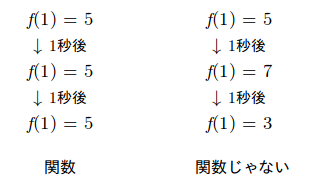

Although possible, the Python syntax better accommodates docstring for normal functions than lambda functions.įor a comprehensive overview of unit testing in Python, you may want to refer to Getting Started With Testing in Python. You can add a docstring to a Python lambda via an assignment to _doc_ to document a lambda function. The failed test results from the same failure explained in the execution of the unit tests in the previous section.
Although the syntax of Python lambda functions does not support a typical docstring, it is possible to assign a string to the _doc_ element of a named lambda:
#Haskell functions code#
The doctest module extracts interactive Python code from docstring to execute tests. Changing the expected result from 6 to 5 will satisfy all the tests for LambdaTest. This failure is due to an intentional mistake in the test case. ok = FAIL: test_add_three (_main_.LambdaTest) - Traceback (most recent call last): File "lambda_unittest.py", line 18, in test_add_three self.assertEqual(addtwo(3), 6) AssertionError: 5 != 6 - Ran 3 tests in 0.001s FAILED (failures=1)Īs expected, we have two successful test cases and one failure for test_add_three: the result is 5, but the expected result was 6. ok test_add_two_point_two (_main_.LambdaTest). The dis module exposes functions to analyze Python bytecode generated by the Python compiler: Let’s verify how Python sees a function built with a single return statement versus a function constructed as an expression ( lambda). FunctionsĪt this point, you may wonder what fundamentally distinguishes a lambda function bound to a variable from a regular function with a single return line: under the surface, almost nothing. The following sections highlight the commonalities and subtle differences between normal Python functions and lambda functions. At first glance, you may accept that a lambda function is a function with some syntactic sugar shortening the code to define or invoke a function. Nevertheless, don’t let this statement deter you from using Python’s lambda. Unlike lambda forms in other languages, where they add functionality, Python lambdas are only a shorthand notation if you’re too lazy to define a function. This quote from the Python Design and History FAQ seems to set the tone about the overall expectation regarding the usage of lambda functions in Python:

Remove ads Python Lambda and Regular Functions The identity function, a function that returns its argument, is expressed with a standard Python function definition using the keyword def as follows: Here are a few examples to give you an appetite for some Python code, functional style. In January 1994, map(), filter(), reduce(), and the lambda operator were added to the language. Python is not inherently a functional language, but it adopted some functional concepts early on. The separation in both families presents some nuances, as some functional languages incorporate imperative features, like OCaml, while functional features have been permeating the imperative family of languages in particular with the introduction of lambda functions in Java, or Python. This approach promotes mutation and requires managing state. The imperative style consists of programming with statements, driving the flow of the program step by step with detailed instructions. Examples of functional languages include Haskell, Lisp, or Erlang.īy contrast, the Turing Machine led to imperative programming found in languages like Fortran, C, or Python. This equivalence is known as the Church-Turing hypothesis.įunctional languages directly inherit the lambda calculus philosophy, adopting a declarative approach of programming that emphasizes abstraction, data transformation, composition, and purity (no state and no side effects). The two models of computation, lambda calculus and Turing machines, can be translated into each another. It is Turing complete, but contrary to the concept of a Turing machine, it is pure and does not keep any state.įunctional languages get their origin in mathematical logic and lambda calculus, while imperative programming languages embrace the state-based model of computation invented by Alan Turing. Lambda calculus can encode any computation. Lambda functions are also referred to as lambda abstractions, a direct reference to the abstraction model of Alonzo Church’s original creation. Alonzo Church formalized lambda calculus, a language based on pure abstraction, in the 1930s.


 0 kommentar(er)
0 kommentar(er)
